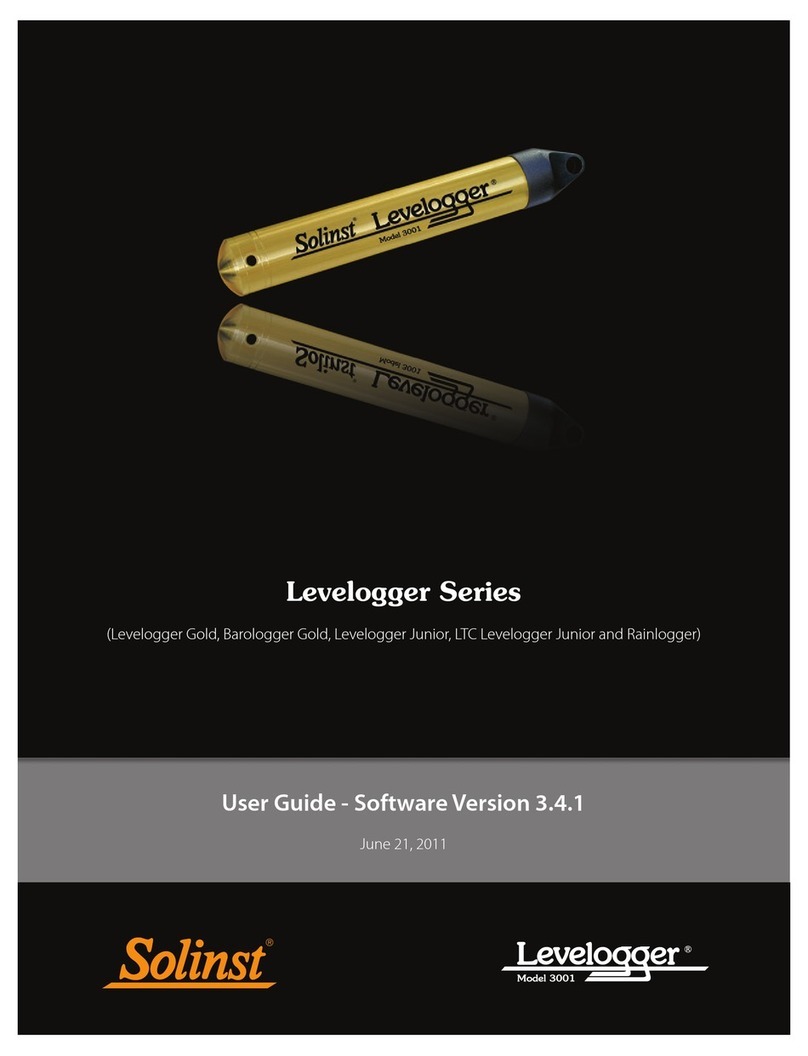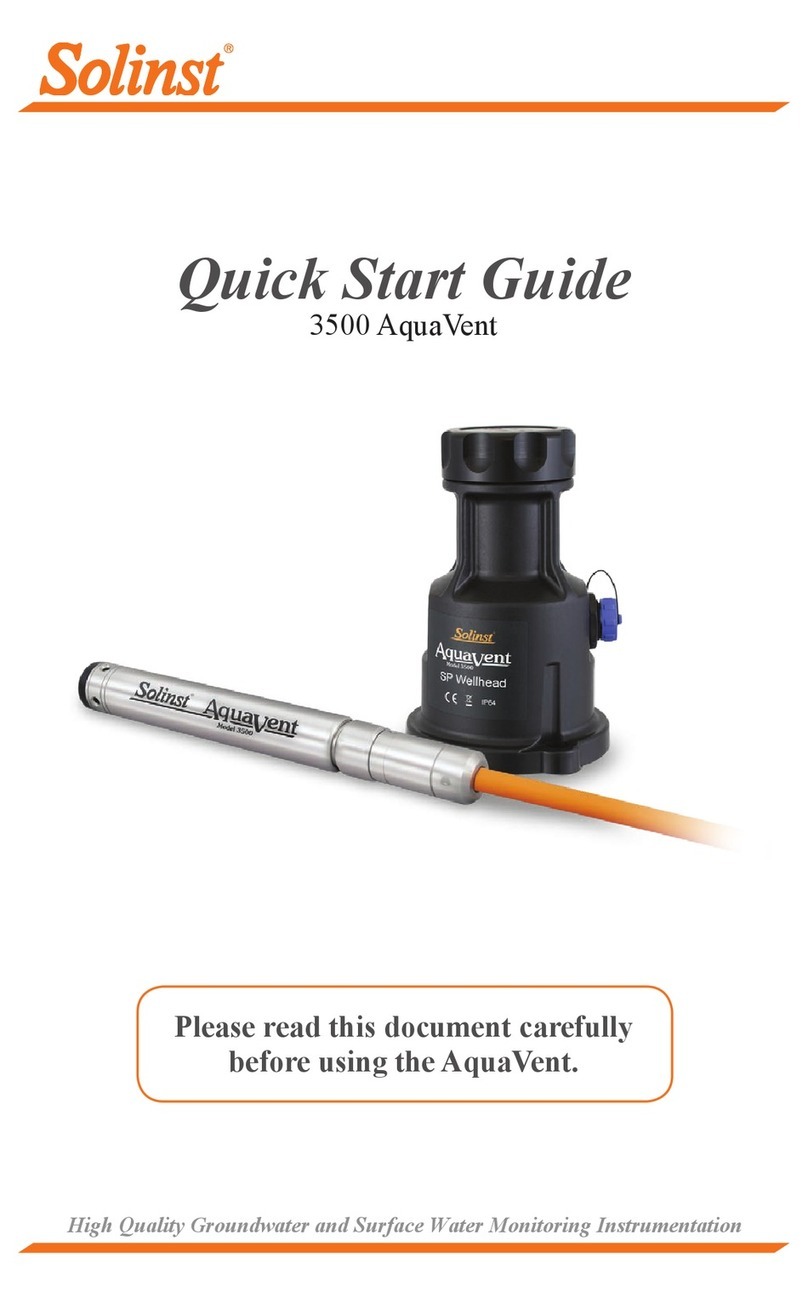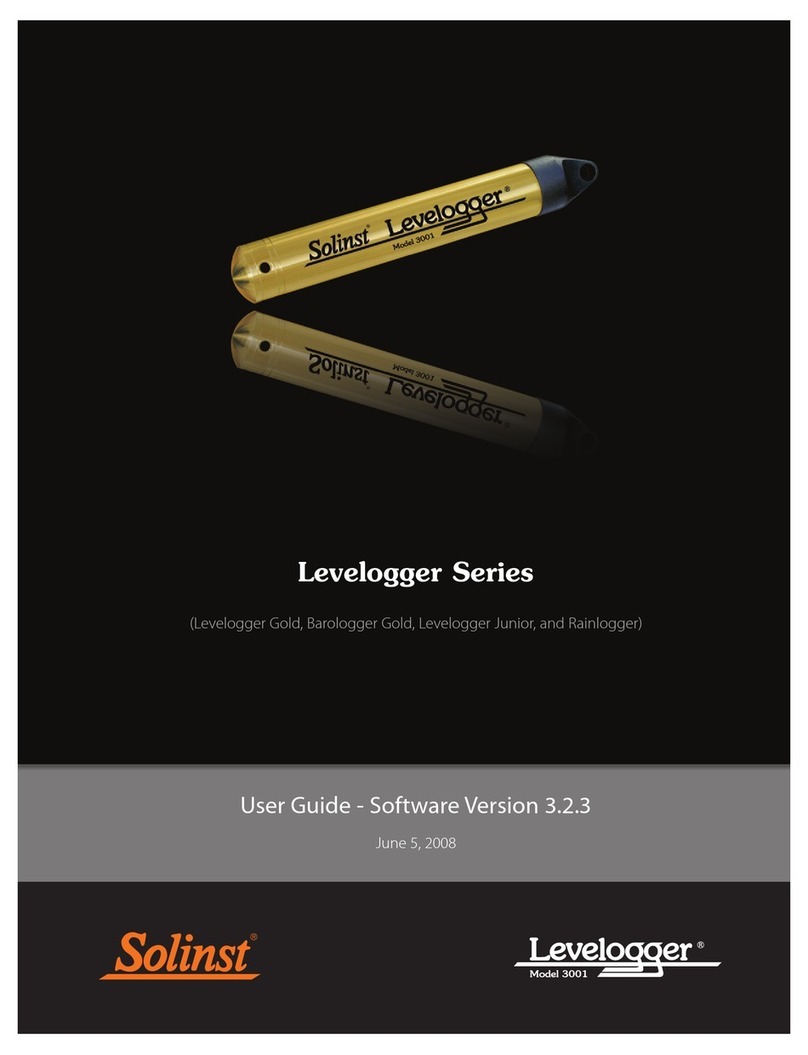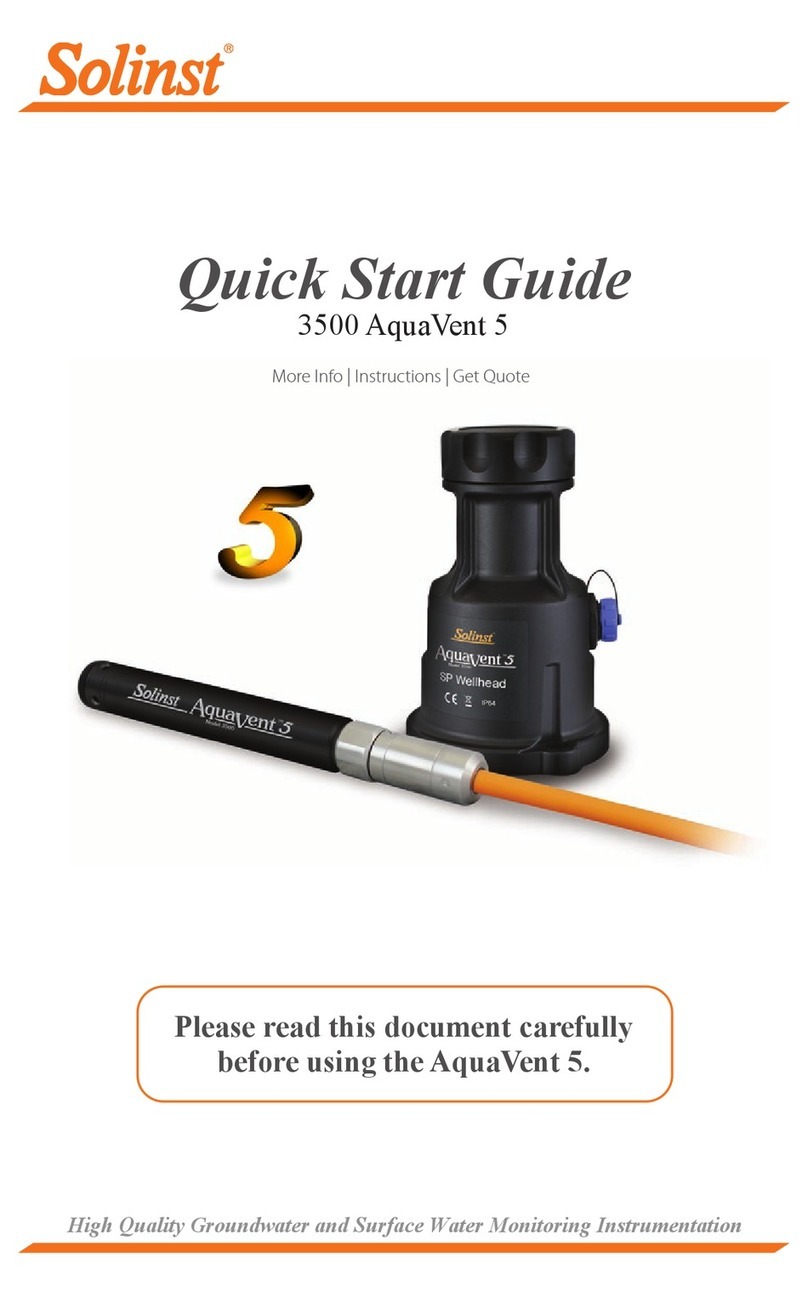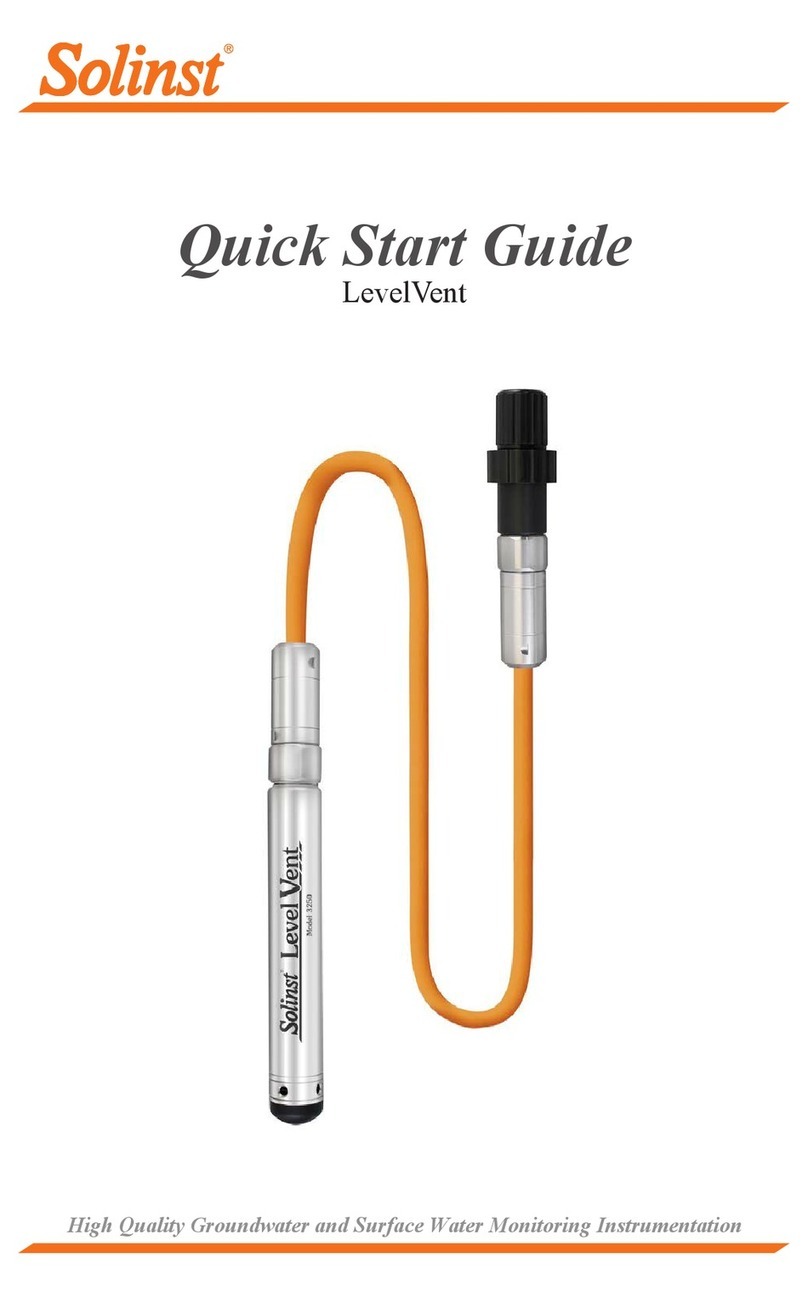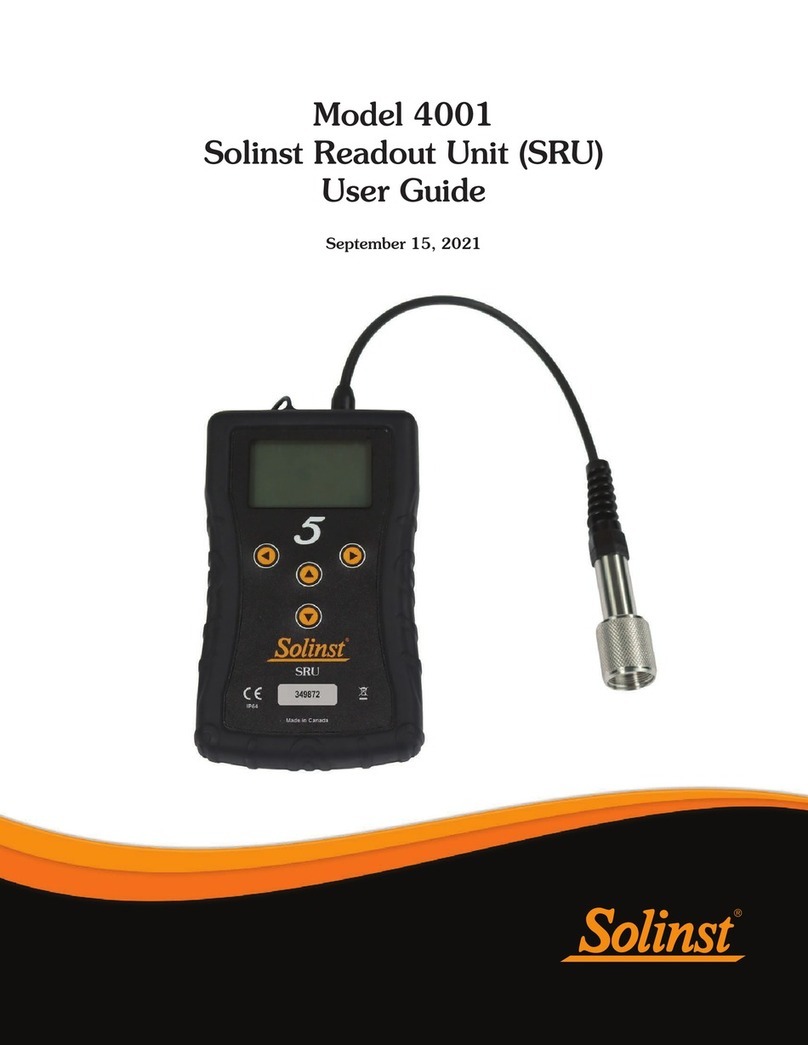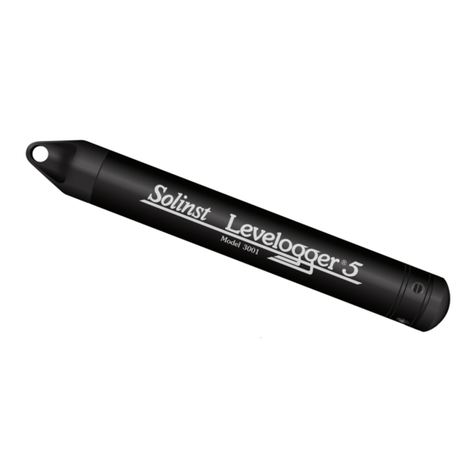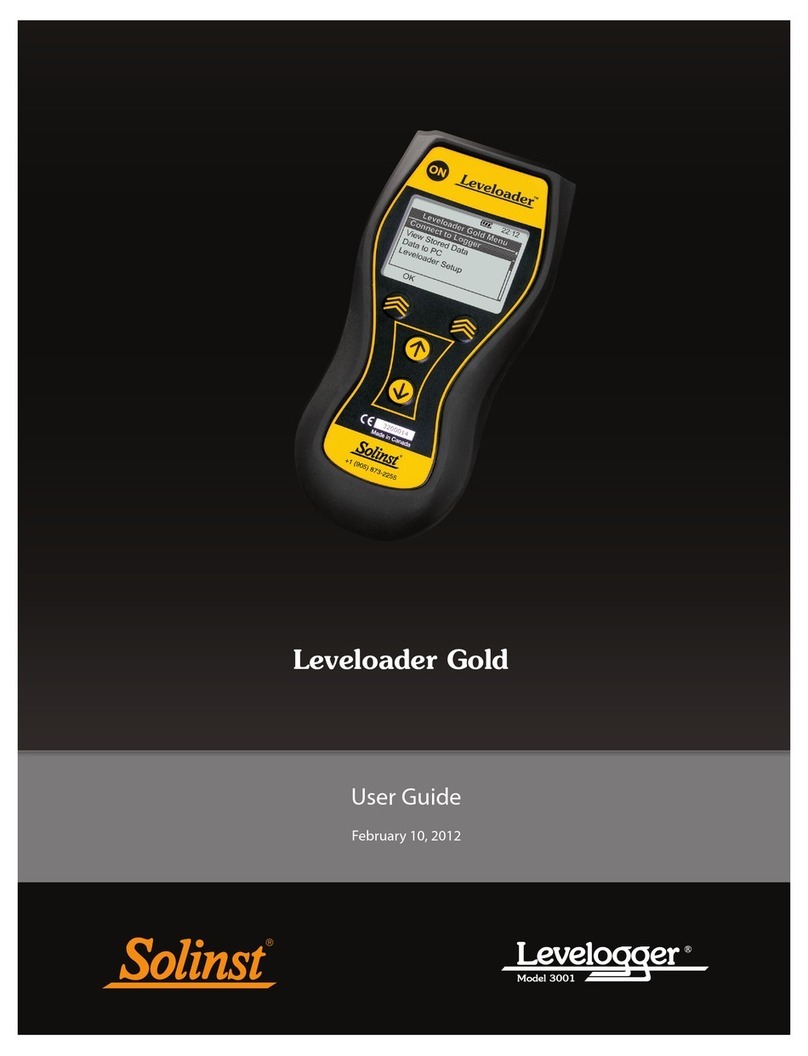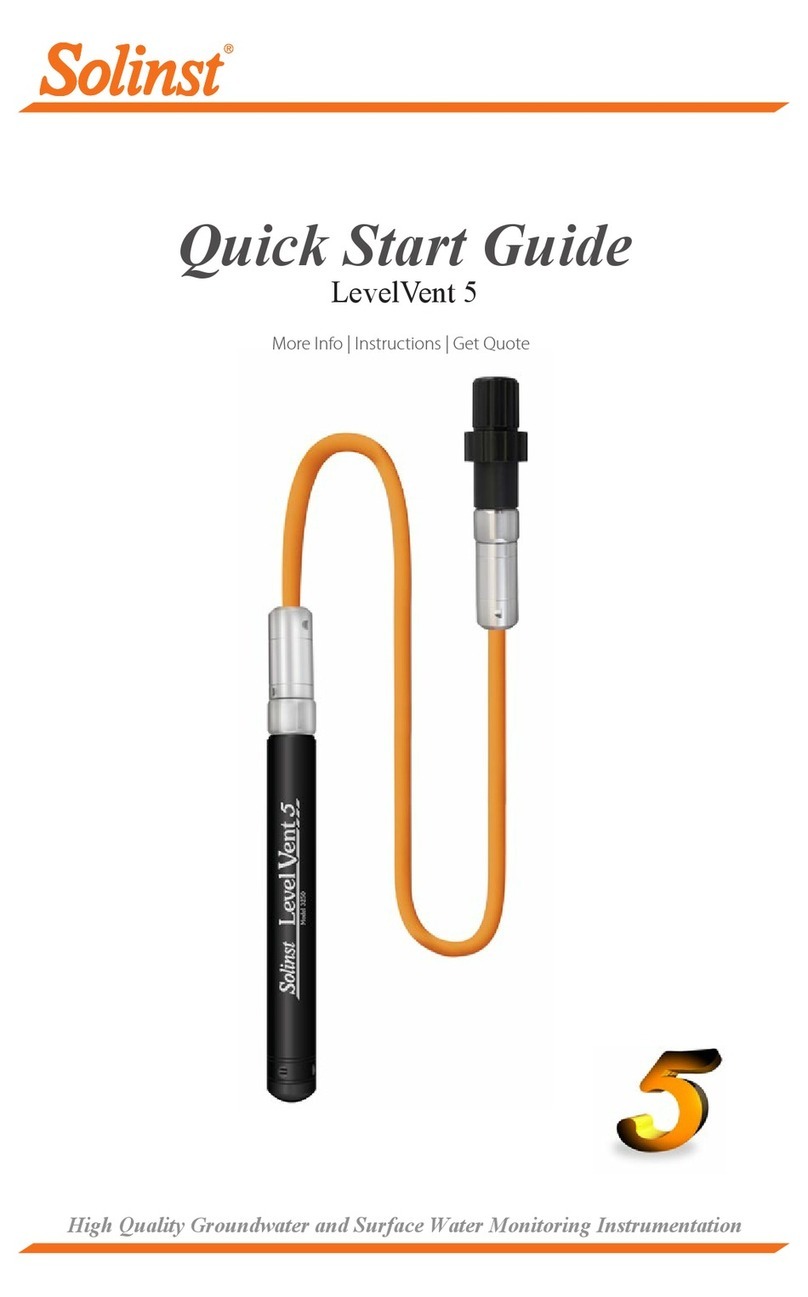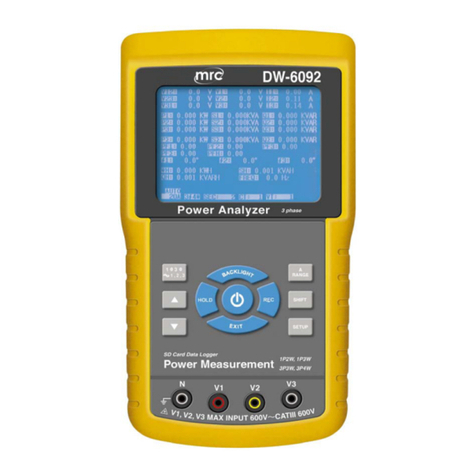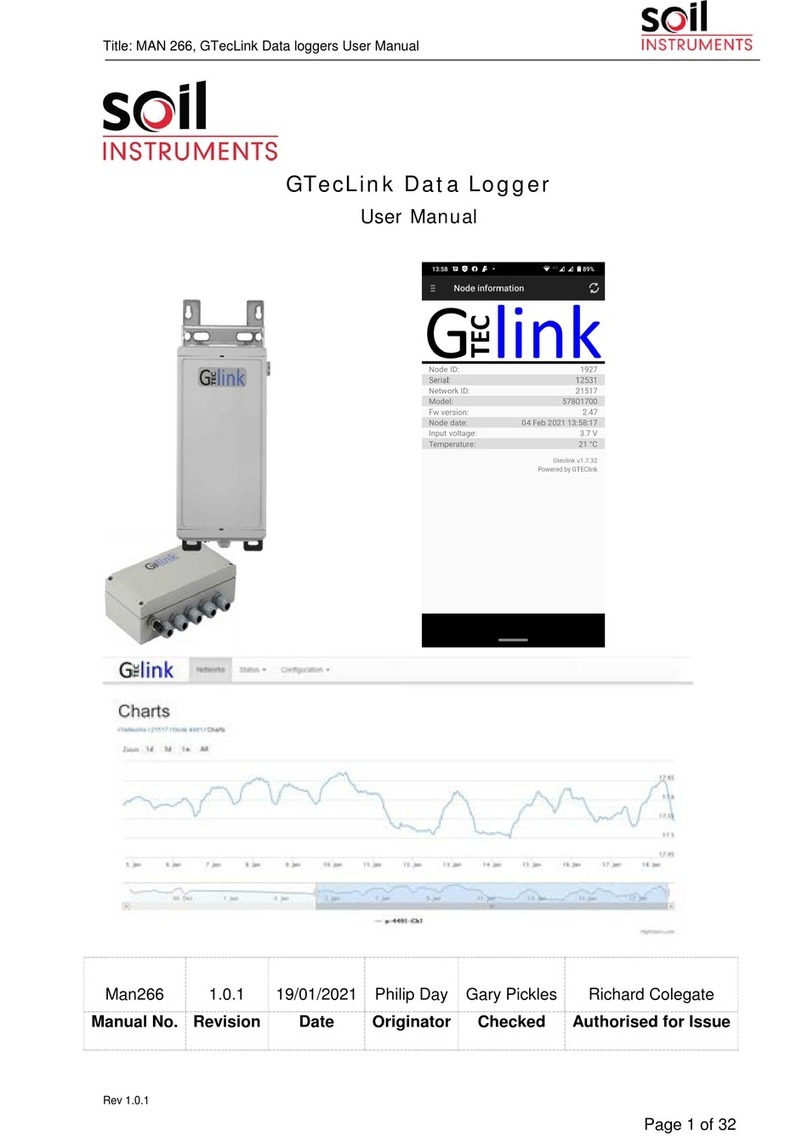
Levelogger Series User Guide
Page 6
1.1 Levelogger Series
1.1.1 Levelogger 5
The Levelogger 5 is an absolute (non-vented) datalogger, which measures groundwater and surface water
levels and temperature. Water levels are displayed as temperature compensated pressure readings, and can be
barometrically compensated with the aid of a Barologger 5.
Note: Solinst recommends using the most recent Levelogger 5 firmware version with the latest Levelogger Software
version. See Section 2.3.
Models Full Scale Accuracy Resolution
M5 5 m (16.4 ft.) ± 0.3 cm (0.010 ft.) 0.001% FS
M10 10 m (32.8 ft.) ± 0.5 cm (0.016 ft.) 0.0006% FS
M20 20 m (65.6 ft.) ± 1 cm (0.032 ft.) 0.0006% FS
M30 30 m (98.4 ft.) ± 1.5 cm (0.064 ft.) 0.0006% FS
M100 100 m (328.1 ft.) ± 5 cm (0.164 ft.) 0.0006% FS
M200 200 m (656.2 ft.) ± 10 cm (0.328 ft.) 0.0006% FS
Levelogger 5 Technical Specifications
Level Sensor: Piezoresistive Silicon with Hastelloy® Sensor
Ranges: 5, 10, 20, 30, 100, 200 m
Accuracy ± 0.05% FS
Resolution:: 0.001% FS, 0.0006% FS
Normalization: Automatic Temperature Compensation
Temp. Comp. Range: 0ºC to 50ºC
Temperature Sensor: Platinum Resistance Temperature Detector (RTD)
Temp. Sensor Accuracy: ± 0.05ºC
Temp. Sensor Resolution: 0.003ºC
Battery Life: 10 years (based on 1 reading/minute)
Clock Accuracy (typical): ± 1 minute/year (-40ºC to 80ºC)
Operating Temperature: -20ºC to 80ºC
Maximum # Readings: 150,000 sets of readings
Memory: Continuous or Slate mode
Communication Speed: 9600 bps, 57,000 bps with USB
Com Interface: Optical high-speed: USB, SDI-12
Size: 22 mm x 160 mm (7/8" x 6.3")
Weight: 166 grams (5.9 oz.)
Corrosion Resistance: Baked-on coating using polymerization technology (inside and out)
and superior corrosion resistant Hastelloy pressure sensor
Wetted Materials: Delrin®, Viton®, 316L Stainless Steel, Hastelloy, Regulator approved
PFAS-free PTFE
Sampling Modes: Linear, Event & User-Selectable Schedule with Repeat Mode,
Future Start, Future Stop, Real Time View
Measurement Rates: 0.125 second to 99 hours
Barometric Compensation: High accuracy, air-only, Barologger
Note: The Model number refers to the depth of submergence below water level that the pressure sensor can
withstand. i.e.: The Levelogger 5, which is available in M5, M10, M20, M30, M100, and M200 ranges has actual water
level ranges of 5 m (16.40 ft), 10 m (32.80 ft), 20 m (65.60 ft), 30 m (98.40 ft), 100 m (328.0 ft), and 200 m (656.2 ft),
respectively.

